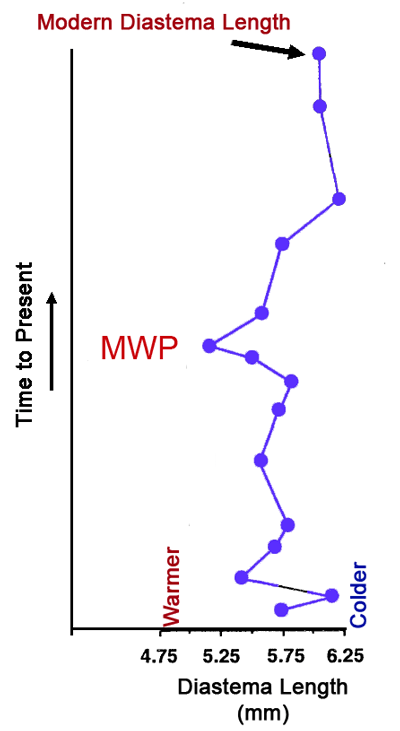Reference
Hadley, E.A., Kohn, M.H., Leonard, J.A. and Wayne, R.K. 1998. A genetic record of population isolation in pocket gophers during Holocene climatic change. Proceedings of the National Academy of Sciences, USA 95: 6893-6896.
Description
The authors examined body size characteristics of pocket gopher (Thomomys talpoides) remains obtained from Lamar Cave, Yellowstone National Park, USA (~45°N, 110°W). Their results indicated that during the Medieval Warm Period, pocket gophers had a significantly shorter (89% of mean value) diastema (the gap between the animals' molars and incisors) and presumably smaller body size than in colder times. This finding, in their words, "accords with Bergmann's rule, which states that animals from warmer parts of a geographic range tend to be smaller." And because modern diastema lengths are not nearly as short as diastema lengths during Medieval times (see figure below), we conclude that the MWP (AD 600-1500, as defined by the paper's authors) was likely warmer than the CWP.





